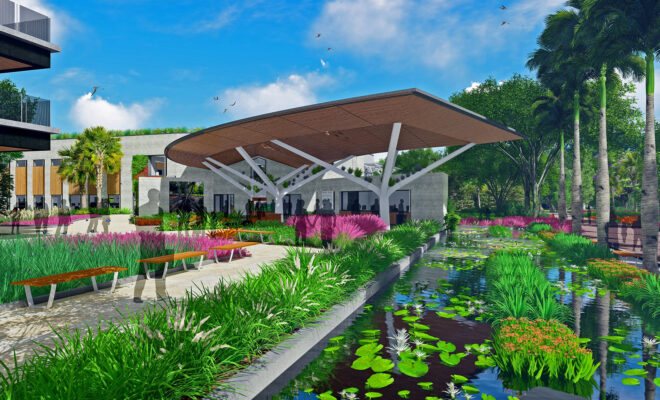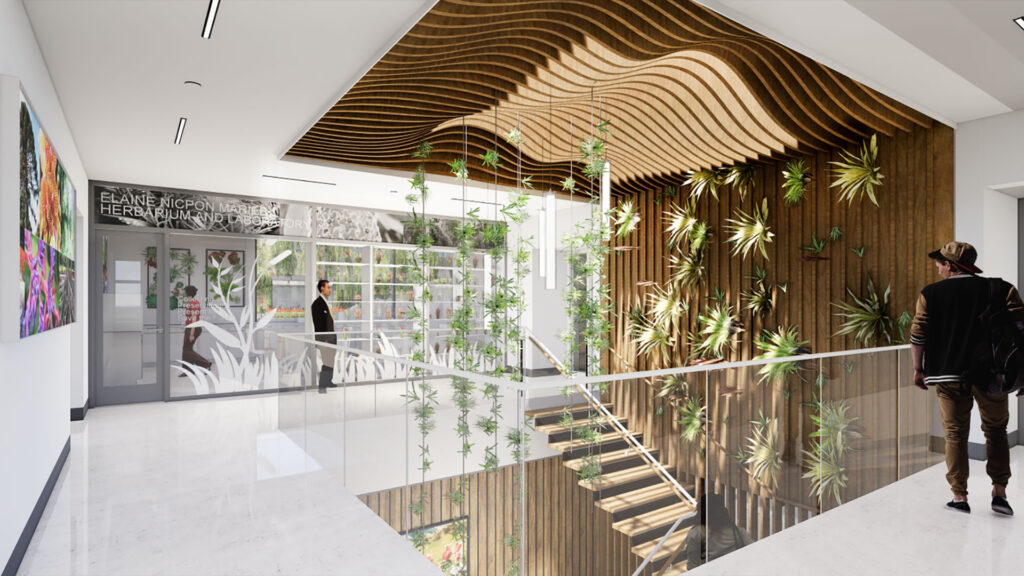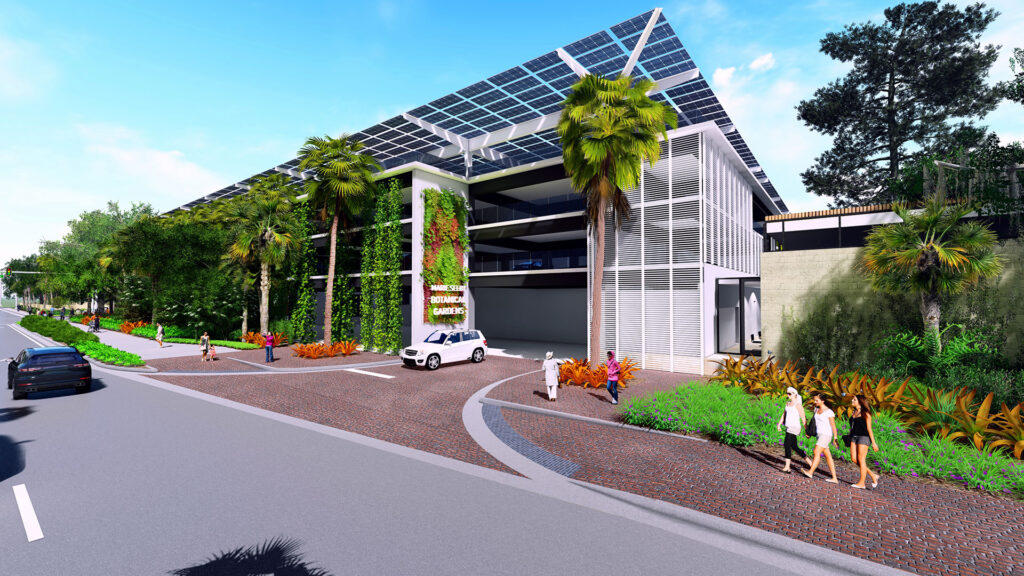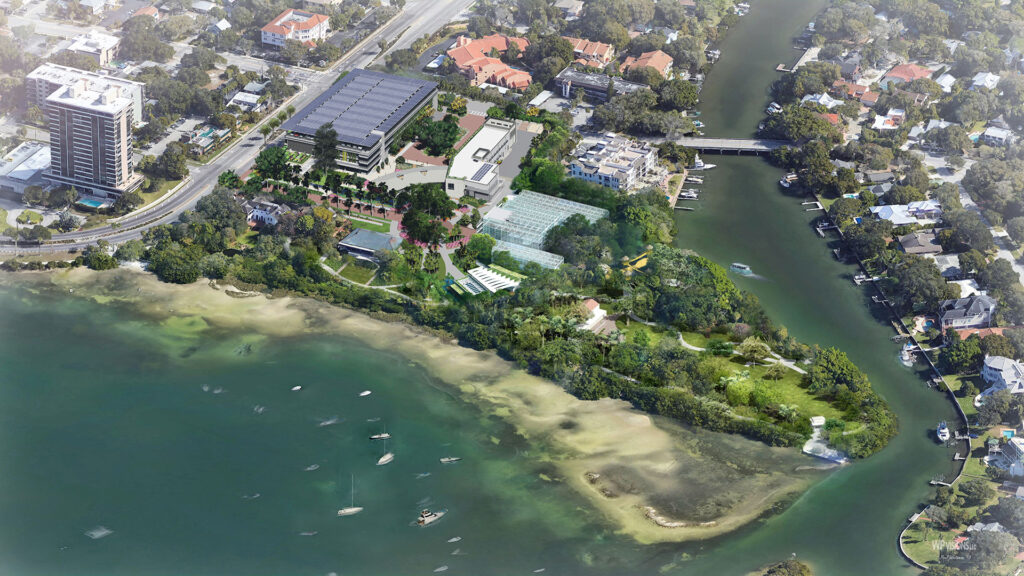
Feature
Selby Gardens’ Green Horizon: A Visionary Leap Into Botanical Brilliance
By Hallie Peilet Young | January 2024
Marie Selby Botanical Gardens Embarks on a Sustainable Renaissance with Phase One of its Master Plan
In the heart of Sarasota, a botanical revolution is unfolding, a green symphony conducted by Marie Selby Botanical Gardens.
As the institution gears up to open Phase One of its three-phase Master Plan on January 11, 2024, the world is about to witness the birth of the first net-positive energy botanical garden complex. With over $57 million raised, this ambitious endeavor is not just transforming the physical landscape of Selby Gardens but also setting a new global standard for sustainable horticulture.
Imagine a botanical haven where every leaf, every bloom, and every breeze contribute to a net-positive energy ecosystem. Marie Selby Botanical Gardens is turning this dream into reality with Phase One, a visionary expansion that adds 188,030 square feet of innovation to the iconic Sarasota Bay campus.
“The completion of Phase One aligns well with Selby Gardens’ 50th anniversary,” Jennifer O. Rominiecki, President and CEO of Selby Gardens, said. “What better way to celebrate the last 50 years than by putting in the necessary infrastructure for the next 50?”
Central to Phase One is the Morganroth Family Living Energy Access Facility (LEAF). This cutting-edge facility provides parking, a garden-to-plate restaurant, as well as a new gift shop, vertical gardens, and a nearly 50,000 square-foot solar array.

“This project really is an international model in sustainability, helping us preserve our history, sustain our future, and safeguard our research collections,” Rominiecki said, emphasizing the significance of the LEAF.
The LEAF doesn’t just mark a leap in sustainable technology; it embodies a shift towards a greener future. It’s a place where parking lots transform into solar fields, where a restaurant, named The Green Orchid, is not just a culinary delight but the world’s first net-positive energy restaurant, entirely powered by solar energy.
“One day the team called me and said, ‘We just realized that if we add this many more solar panels, we’re going to be in a realm all by ourselves,’” Rominiecki said.
Another part of Phase One, the Steinwachs Family Plant Research Center, stands tall and resilient against hurricanes and is rich with scientific treasures. Housing the Elaine Nicpon Marieb Herbarium and Laboratory, the research library, and a rooftop garden with its own solar array, this facility is a testament to Selby Gardens’ commitment to preserving botanical history and to the vital intersection of science and sustainability.
“All of it really came out of the design process in an organic way. The instruction that I gave the design team was, ‘Just make the project as green as possible, as sustainable as possible,’” says Rominiecki, underscoring the integral role that sustainability played in shaping every facet of Phase One.
Phase One also dons the Jean Goldstein Welcome Center, with its ticketing pavilion, welcome gallery, and theater, beckoning visitors into the heart of Selby Gardens. It’s a place designed not just to accommodate but to immerse, to orient, and to welcome with open arms.
The Center signifies more than just a physical space; it’s an embodiment of Selby Gardens’ commitment to creating an inclusive and inviting community space.
Can you feel the overarching theme here? What really sets Phase One apart is its commitment to sustainability. Going beyond traditional benchmarks, Selby Gardens aims for “Petal” certification through The Living Building Challenge of the International Living Future Institute. This certification isn’t just about constructing buildings, it’s a testament to Selby Gardens’ commitment to be a living example of environmental stewardship.
Selby Gardens Board Chair Dr. Joel Morganroth recognizes none of this would be possible without the unwavering support of the community.

“On behalf of Selby Gardens’ Board of Trustees, we want to thank the more than 3,500 contributors who have made this vital undertaking possible,” Dr. Morganroth said.
Private contributions to “Innovating A Greener Future: The Campaign for Selby Gardens” were the driving force behind Phase One. Jean Weidner Goldstein, Cornelia Matson, and Pauline L. Wamsler, as Trustees, played a crucial role in steering this vision toward reality.
As Selby Gardens celebrates its 50th anniversary, the completion of Phase One is not just an achievement; it’s a promise for the future. The institution is already looking ahead, envisioning a second and third phase that include a hurricane-resilient greenhouse complex, a learning pavilion, the restoration of the Payne Mansion, unification of walking paths, and enhancements to sea walls and docks.
“This project really is an international model in sustainability, helping us preserve our history, sustain our future, and safeguard all of our research collections,” says Rominiecki, underscoring the project’s multifaceted impact on the community and beyond.
And as you may remember, it was quite the road to get to this point. This decision finally came about in a 4-1 vote on February 16, 2021, when the Sarasota City Commission gave final approval for Selby Gardens’ Master Plan to become a reality. When it’s all said and done, the opening of Phase One will mark just under three years since that decision.
“This project is really a game-changer for our community,” adds Rominiecki, reflecting on the resilience that brought this ambitious vision to life. “I’m just glad that we didn’t waver, and we kept going.”
As the community eagerly awaits the unveiling of Phase One soon, Marie Selby Botanical Gardens stands as a beacon of hope and innovation. This isn’t just a botanical garden; it’s a living testament to what happens when a community comes together with a shared vision for a greener tomorrow.

Rominiecki’s words echo the sentiment behind every leaf, every solar panel, and every aspect of Phase One: “We have the deepest gratitude for everyone who believed in this exciting vision for Selby Gardens’ future,” she said. As the gates open to Phase One, Selby Gardens not only becomes a living museum but a catalyst for a sustainable, green renaissance that transcends the boundaries of botanical gardens worldwide.
This green revolution at Selby Gardens isn’t just about celebrating the last 50 years; it’s about securing a vibrant and sustainable future for the next 50 and beyond. In the rustle of the leaves and the hum of the solar panels, we find a harmonious vision of a world where botanical brilliance and environmental stewardship go hand in hand.



You must be logged in to post a comment Login